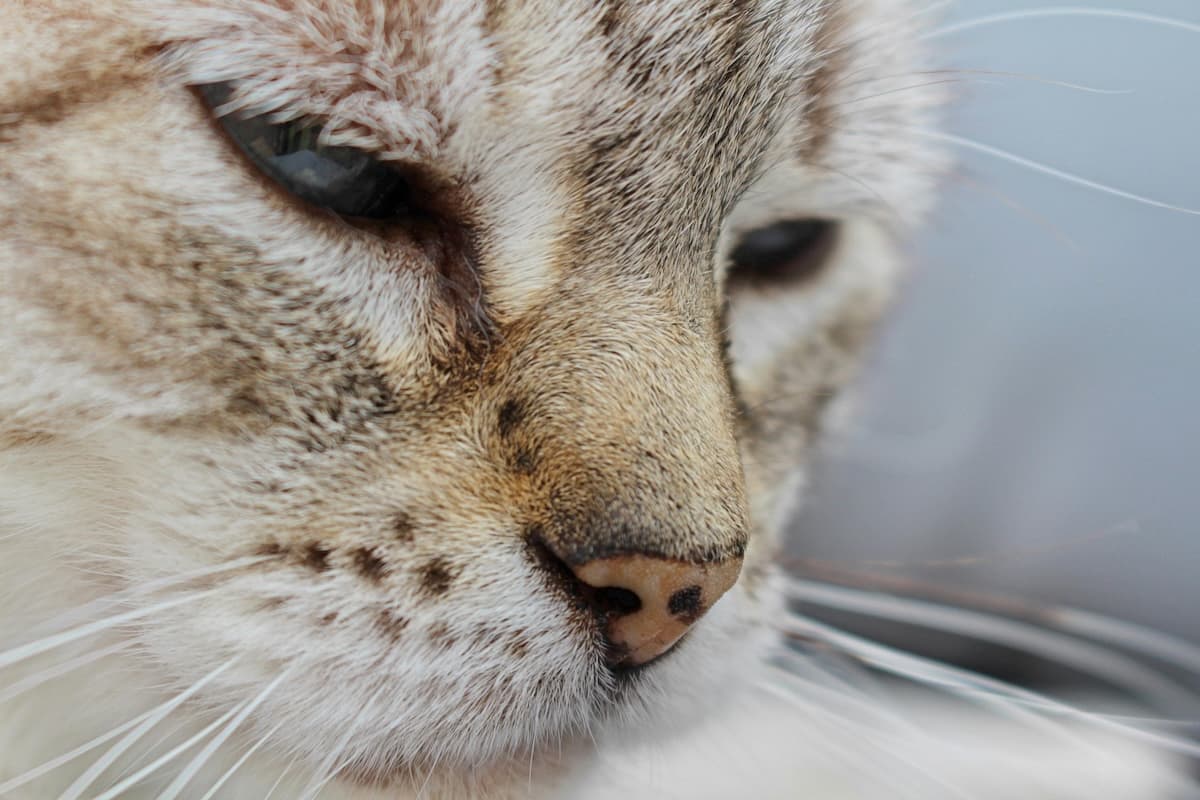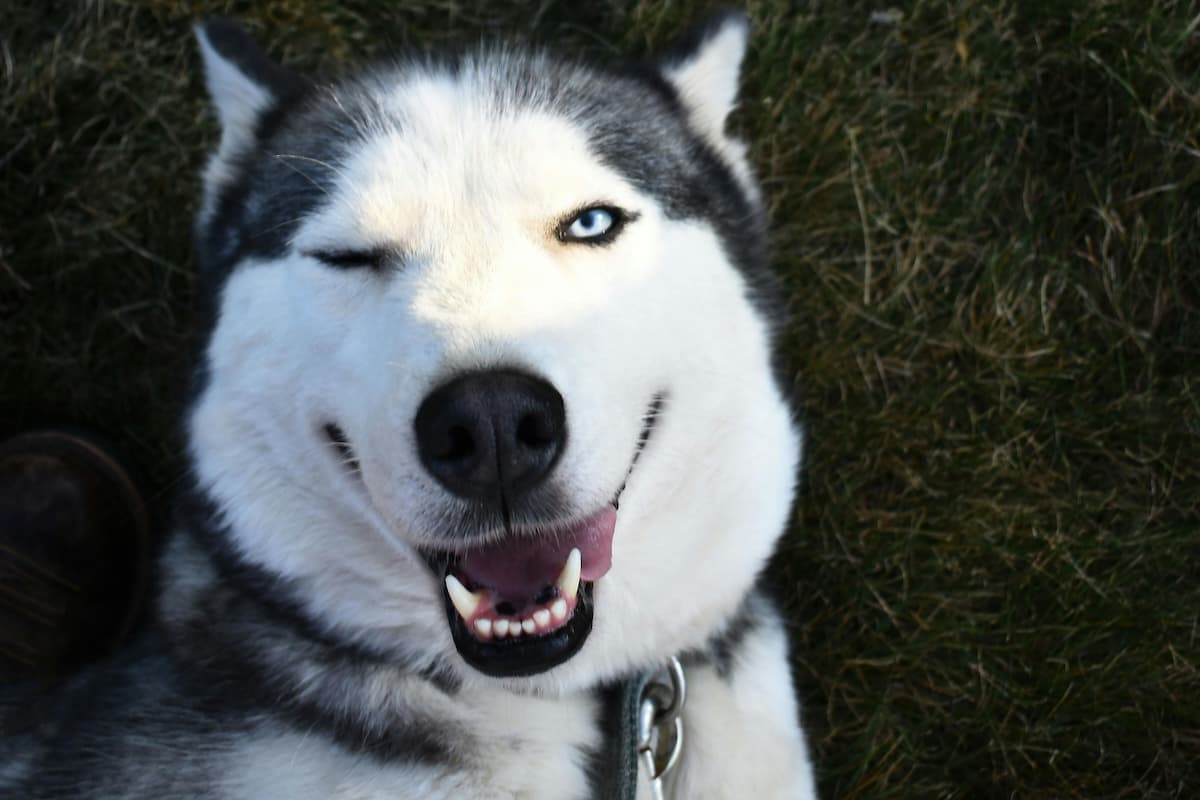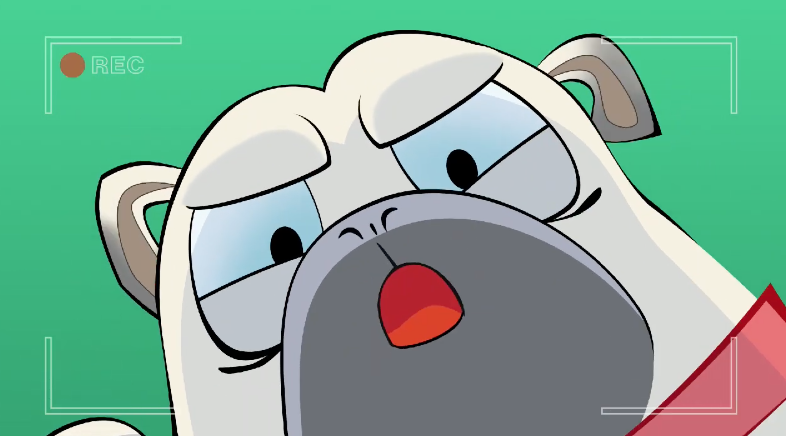

Big Brain Stuff: Can Dogs and Cats Suffer from Neurological Issues?
Your dog or cat may just be a family member on four legs, but they’re definitely not human. Still, they do have at least one thing in common with us- neurological problems. What causes them, how you can treat them, and what you can do if the worst happens: we have all the answers.

Writer Jannah Berkley
10 min read

Just like humans, your beloved furry friend has a nervous system too. This allows them to calm their barking when they realize it’s you at the door, to smell, to sense danger, to jump and land safely, and to feel emotions like love (those couch cuddles are a two-way love connection). On the downside, this means they can also be affected by neurological conditions.
The nervous system includes the brain, spinal cord, and nerves, and neurological conditions can affect any or all of those parts of your pet. Some such health issues are inherited, while others appear down the road. Learn all about the symptoms, tests and treatments available for dogs and cats with a variety of neurological disorders.
Inherited neurological issues in dogs
Some nervous system issues are more common in certain dog breeds and are inherited as puppies. These disorders may stem from the brain, spinal cord, peripheral nerves, or even the nerve-muscle junction. Most of these diseases have treatments that can help manage or at least lessen the symptoms of the disorder in your dog. Some of these disorders include:
- Cerebellar hypoplasia: This condition comes from an undeveloped cerebellum. The cerebellum is the part of the brain that controls balance, coordination, and other complex motor functions. This means that your dog may live with a tremor that doesn’t get worse or better. It’s most common in Irish Setters, Wirehaired Fox Terriers and Chow Chows. It’s a lifelong condition, but dogs can live a long and happy life with it. They just may need more support for balance, non-slip surfaces and a single-floor home.
- Congenital vestibular disease: This condition affects a dog’s coordination, balance, and hearing. It’s inherited mostly in Doberman Pinschers, English Cocker Spaniels and German Shepherds. It creates balance and posture issues, and often leads to permanent deafness. There isn’t a treatment for this disease, but pets can adapt over time.
- Hepatic encephalopathy: This occurs when the liver is unable to remove toxic substances from the blood due to a congenital shunt. Symptoms often begin before your dog is 6 months old. While this is primarily a liver issue, it can cause neurologic symptoms like tremors and even seizures. Initially, your dog may show more mild signs, like being severely agitated, barking incessantly, acting blind, twitching motions or falling into extended stupors. It tends to occur more frequently in Australian Cattle Dogs, Cairn Terriers, Maltese Terriers, Miniature Schnauzers, Old English Sheepdogs, and Yorkshire Terriers. Liver shunts can be diagnosed by a combination of ultrasound, CT scan and/or blood test. Surgical correction of the shunt is the ideal treatment.
- Hydrocephalus: Excess cerebrospinal fluid puts harmful pressure on the brain. Pets may show no signs or can experience incoordination, head pressing, seizures, and vision problems. It’s more common in toy breeds, Pugs, Bulldogs, and Bullmastiffs. An MRI or ultrasound can give you a proper diagnosis. For treatment, your dog could be prescribed corticosteroids or omeprazole, but in severe cases, they might need surgery.
- Idiopathic epilepsy: This seizure disorder doesn’t have a clear cause. It’s more common in Beagles, German Shepherds, Golden Retrievers, Irish Setters, Poodles, Labrador Retrievers, Siberian Huskies, and Springer Spaniels. If your dog has a seizure, the vet will need to rule out all other causes for seizures before diagnosing them with idiopathic epilepsy. There’s no cure for it either, unfortunately, but to lessen the frequency and severity of seizures your dog may be prescribed anti-epileptic drugs (AEDs) such as phenobarbital, potassium bromide, Levetiracetam, or Zonisamide.
- Puppy hypoglycemia: Also known as low blood sugar, this isn’t primarily a neurologic issue and could be caused by many things, such as intestinal parasites or malnutrition. Hypoglycemia mostly occurs within the first 6 months of age in toy breeds, like Toy Poodles. It can be aided by frequent feedings of special puppy food. Most pups grow out of this issue.

Inherited neurological issues in cats
Some nervous system issues are passed down to kittens from their parents . These disorders may stem from the brain, spinal cord, peripheral nerves, or even the nerve-muscle junction. Most of these diseases have treatments that can help manage or at least lessen the effects of the disorder in your cat. Some of these disorders include:
- Cerebellar hypoplasia: This condition is caused by exposure to feline parvovirus while the kitten is in the womb. It affects the cerebellum, which is the part of the brain that controls balance, coordination, and other complex motor functions. Affected cats often have an intention tremor that doesn’t get worse or better. A definitive diagnosis can be made with an MRI. While it is a lifelong condition, these cats can live a long and happy life. They may just need more support with balance, non-slip surfaces and a single-floor home.
- Congenital vestibular disease: This condition affects a cat’s coordination, balance, and hearing. It’s inherited the most in Burmese cats. It creates balance and posture issues, and can lead to permanent deafness. There isn’t a treatment for this disease, sadly, but cats can adapt to it over time.
- Hydrocephalus: Excess cerebrospinal fluid puts harmful pressure on the brain. Pets may show no signs or can experience incoordination, head pressing, seizures, and vision problems. An MRI or ultrasound can give you a proper diagnosis. Treatment may include medication, but in severe cases pets might need surgery.
- Hepatic encephalopathy: This occurs when the liver is unable to remove toxic substances from the blood due to a congenital shunt. While this is primarily a liver issue, it can cause neurologic symptoms, like tremors and even seizures. Symptoms often begin before your cat is 6 months old. Initially, they may show more mild signs, like being severely agitated, vocalizing incessantly, acting blind, twitching motions or falling into extended stupors. Liver shunts can be diagnosed by a combination of ultrasound, CT scan and/or blood test. Surgical correction of the shunt is the ideal treatment.
- Spina bifida occulta: This birth defect occurs in tailless Manx cats and means “split spine”. When kittens have this, it means their spine did not completely close in the womb. These cats may have weakness in their rear legs and may not be able to control defecation and urination. Your cat may have this condition without symptoms, in which case no treatment is needed. But if they do suffer from severe symptoms, the prognosis is poor.

Other neurological issues in dogs
- Concussions: Head trauma is the most common cause of concussion in dogs (with car accidents being the primary culprit). Symptoms to look out for include sudden lethargy, vomiting, lack of balance and different sized pupils. If you suspect your dog has a concussion, it’s essential to take them to the veterinarian for proper diagnosis. In terms of treatment, your vet may administer IV fluids for dehydration, oxygen treatment to help with their breathing, and medication to reduce swelling in the brain. Surgery may be recommended in severe cases.
- Intervertebral Disc Disease: Also known as IVDD, this disease is a common source of back pain, especially in dogs of certain breeds (Dachshunds, Toy and Miniature Poodles, Pekingese, Lhasa Apsos, German Shepherds, French Bulldogs, Beagles, and Cocker Spaniels). A dog with a spinal disc problem may avoid turning their head a certain way or walk over their food and then stare at it. Some walk with a hunched appearance. A diagnosis can come from a combination of a vet exam and some scans (CT or MRI). For treatment, some pain medications and muscle relaxers can be used. In severe cases, your dog may need surgery.
- Vestibular syndrome: The vestibular system in dogs is located within the middle and inner ear. And just like humans with vertigo, when there are issues in this area, it causes balance problems and dizziness. The cause could be as simple as an ear infection, and your vet will prescribe antibiotics. But if your older dog suddenly starts falling over, losing balance, circling, stumbling or has rapid eye movements, it could be canine idiopathic vestibular syndrome, a typically self-limiting disorder treated with anti-nausea medication for the associated motion sickness.
- Wobbler syndrome: This syndrome affects the cervical spine in large breed dogs. Dobermans and Great Danes are the most affected breeds. Signs of this syndrome include a “wobbly” walk or head down while walking (a sign of neck pain). In severe cases, dogs may drag their feet at times. For treatment, your dog may be prescribed anti-inflammatory drugs or, if it’s very advanced, your vet may suggest surgery. To decrease your dog’s neck pain, it’s recommended to switch from a collar to a harness.
- Meningitis, encephalitis, and encephalomyelitis: All of these diseases are inflammatory conditions that are connected to the meninges, brain, or spinal cord. There can be different causes, such as a virus, bacteria, fungi, parasite or chemical agent. The usual signs are fever, hyperesthesia, neck stiffness, and painful muscle spasms along the spine. Most cases require analysis of cerebrospinal fluid and an MRI for definitive diagnosis. The treatment depends on the root cause.

Other neurological issues in cats
- Infectious diseases: Rabies, Tetanus, Feline infectious peritonitis (FIP), and Feline immunodeficiency virus (FIV) are some of the diseases that cats can get that cause neurological problems. While antiviral treatments are available, prevention is recommended wherever possible. Having your pet vaccinated for rabies is essential, as there’s no treatment once they contract it.
- Vestibular syndrome: The vestibular system in cats is located within the middle and inner ear. And just like humans with vertigo, when there are issues in this area, it causes balance problems and dizziness. You may notice your cat has a sudden head tilt, rapid eye movements, or starts falling, circling or vomiting. The treatment depends on the underlying cause. Your vet may prescribe antibiotics, anti-inflammatory drugs, or anti-nausea medications.
- Neuromuscular disorders: These kinds of disorders can appear over time. Signs may include muscle weakness in the limbs that prevents your cat from standing or exercising normally. There can be many causes, from hormonal diseases to cancer. The treatment depends on the underlying cause, but the best first step is to have your cat checked out by a vet.

Many neurological conditions in cats and dogs are treatable with medications, while others require surgery or more extensive care. Regular vet check-ups are vital when managing the health of your furry friend.
Here’s the thing, though- neurologist visits, medication, and treatments can very easily add up. If you have a dog or cat breed predisposed to certain neurological problems, you should absolutely get Animalia’s dog or cat insurance today. Remember: if any of these issues arise before you have Animalia, they won’t be included in your coverage.





We offer the most
comprehensive coverage
out there
car with a spare tire for life’s bumps.
Having Animalia is like a pimped-out
Rolls Royce with a swimming pool
in the trunk.



Get your pet insurance quote
Pet type
- Dog
- Cat
What is your pet's name?
Zip code






